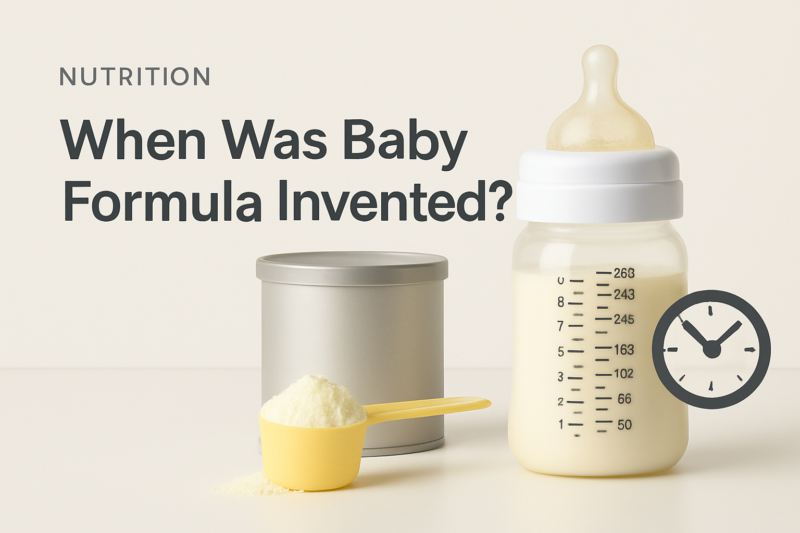
The history of infant feeding is long and complex. For thousands of years, it was the norm for mothers to feed their babies with breast milk or other forms of natural sustenance. However, in the late 19th century, advances in science and technology led to a revolutionary new way of providing nutrition to infants: baby formula. The invention of this product has had an immense impact on how parents care for newborns around the world.
Early versions of baby formula were often made from cows’ milk that was modified by adding malt flour and sugar. This type of formula became especially popular after World War II when condensed milk prices rose significantly due to rationing. By the 1970s, commercial formulas based on hydrolyzed proteins and vegetable oils began appearing in stores, offering greater choice for consumers looking for alternatives to traditional wet-nursing methods. Today, there are many different types of baby formulas available, ranging from cow’s milk-based products to organic varieties made with plant-based ingredients.
Early Human Milk Alternatives
Despite the modern advances in nutrition and baby formula, people have been seeking alternatives to human milk for centuries. The earliest documented use of a non-human milk substitute dates back to 15th century Egypt where buffalo or goat’s milk was used with honey and flour added as thickener. This concoction was not particularly successful, but it did provide evidence that parents were looking for ways to feed their infants without relying solely on breastmilk.
In the 18th and 19th centuries, more complex formulas using various forms of animal milks became commonplace in Europe. Different recipes included cows’ milk combined with wheat flour, barley water, egg yolk, butter and sugar; while some also called for opium tincture or wine to help babies sleep better at night. Generally these mixtures had little nutritive value due to poor sterilization techniques although they provided an alternative option when needed.
The introduction of commercially produced infant formulas revolutionized the way babies were fed by providing reliable food sources that could be stored longer than traditional home-made mixtures. By the early 20th century, many leading brands had emerged including Similac (1906), Nestle’s Farine Lactée (1867) and Mellin’s Food (1894). Today there are dozens of different types of infant formulas available offering parents a variety of options depending on their individual needs and preferences.
Evolution Of Imitation Breast Milk
The search for an alternative to human milk began in earnest during the 19th century, with a variety of different mixtures being created and tested. The development of infant formula was largely driven by economic factors and concerns about managing the supply of breastmilk. In 1867, Justus von Liebig released his first recipe for ‘infant food’, which consisted of cow’s milk boiled with sugar and wheat flour or malt extract. This mixture was not particularly successful as it lacked essential nutrients, such as vitamins A and C.
In 1906, German chemist Dr Alfred Karolyi developed a more advanced version of this formula that included fat-soluble vitamins and minerals. He also added emulsified fats to increase the caloric content of the mixture. By 1914, Henry Darrow had introduced a canned product containing all necessary ingredients for babies aged three months and over. Over the following decades, formulas were further improved upon through research into nutrition science and advances in production techniques. These developments lead to many commercial brands offering imitation breastmilks that could be used safely when mother’s milk was unavailable or insufficient. Today these products are widely available across the world and provide infants with adequate nutrition when needed.
Pioneering Scientists And Their Contributions
The development of baby formula is a remarkable story that can be credited to several pioneering scientists. Their contributions, though varied in their nature, are all rooted in the same goal: providing an alternative food source for infants and children who do not have access to breast milk.
- In 1867, Justus von Liebig developed a liquid product containing various proteins, carbohydrates, minerals and vitamins as a substitute for cow’s milk.
- In 1895, Henri Nestlé introduced his revolutionary ‘Farine Lactée’ which was made from powdered cow’s milk with added sugar and wheat flour.
- Following this breakthrough, chemist Theodore Hauschildt invented evaporated condensed milk powder in 1899; a process which allowed for easy storage and transportation of infant food products without refrigeration or sterilization processes being required.
- Finally, Abbott Laboratories created Similac – a mixture of casein hydrolysate and lactose – in 1923; furthering the evolution of baby formulas by developing one more akin to human breastmilk than ever before seen on the market..
These four figures played pivotal roles in paving the way towards modern day baby formula through their advancements in science and nutrition research during the 19th century; making it possible for mothers everywhere to provide nourishment to their young when breast-feeding is not an option – truly revolutionizing the field of infant nutrition across world cultures today.
The Invention Of Cow’s Milk-Based Formula
The invention of cow’s milk-based formula was a major milestone in the history of infant nutrition. During the late 19th century, several pioneering scientists made remarkable contributions to its development. While there are still debates over which scientist is credited with this achievement, it has been widely accepted that Henri Nestlé developed one of the earliest forms of cow’s milk-based formulas in 1867.
| Scientist | Contribution |
|---|---|
| Henri Nestle | Developed one of the earliest formulas (1867) |
| Justus von Liebig | Created artificial baby food (1860s) |
| Alexander Oskar Hartmann | Devised first modern ready-to-eat formula (1903) |
| Charles Henry Farrage | Pioneered use of sugar in formulae (1900s) |
| Victor Horsley and William Paul Gerhardt | Discovered importance electrolytes for infants’ health (1890s)|
Henri Nestlé’s original recipe contained powdered cows’ milk, wheat flour or malt flour, and added sugar. This early version soon evolved into more complex formulations as other scientists improved upon his work during the late 1800s and early 1900s. Justus von Liebig created artificial baby food in the 1860s while Alexander Oskar Hartmann devised what became known as the first modern ready-to-eat formula in 1903. Charles Henry Farrage pioneered using sugar in formulae around the same time, and Victor Horsley and William Paul Gerhardt discovered the importance of electrolytes for infants’ health prior to that.
As these discoveries continued to be made throughout the twentieth century, many new types of infant formulas were released onto the market including those based on soy protein, goat’s milk, hydrolyzed proteins, lactose free alternatives etc., all designed to meet different needs for babies from varying backgrounds. Consequently, today we have access to an array of nutritious products specifically tailored for infants at every stage – something unimaginable over 100 years ago when cow’s milk-based formulas were just being invented!
Commercialization Of Bottle Feeding
The commercialization of bottle feeding began around the late 19th century, when baby formula was first invented. Prior to this, babies were breastfed or fed a gruel-like mixture made up of cereals and boiled water. However, as infant mortality rates began to rise and society became more industrialized, mothers started turning towards more convenient methods of providing nutrition for their children.
By the early 20th century, various companies had begun producing canned versions of powdered milk mixtures that could be purchased in stores. These products soon gained popularity amongst parents looking for an easier way to feed their growing children. Not only did these formulas provide much needed nutrients for infants who weren’t able to nurse; they also allowed women with jobs outside the home to continue working while still ensuring their child’s health needs were met. Additionally, the use of bottles encouraged some doctors and nurses to recommend them over traditional breastfeeding due to perceived safety concerns regarding cleanliness and bacteria contamination. This further increased the demand for commercial baby formula products throughout the 1920s and 1930s.
As such, by midcentury it had become commonplace for most families in developed countries to rely on store-bought baby formulas as a supplement or replacement to breastfeeding. Today, many different types of prenatal nutrition are available ranging from organic milks specially designed for young infants all the way through toddler drinks tailored towards older kids’ nutritional needs – thanks in part to advances in science which have helped manufacturers create healthier alternatives than what was previously available during earlier eras.
Growing Popularity Of Infant Formula
The commercialization of bottle feeding in the 19th century was a major turning point for infant formula. In the late 1800s, companies began to produce and market powdered milk-based formulas as an alternative to breastmilk. Although these products had been around prior to this time, they were not widely available until industrial production began. The growing use of infant formula during this period can be attributed to its convenience and affordability, which made it more accessible than ever before.
By the early 20th century, infant formula had become a popular choice among parents who chose not to or couldn’t breastfeed their babies. It was seen as a viable option that could provide adequate nutrition for infants without exposing them to potential risks associated with breastfeeding at the time such as malnutrition or maternal illness. With advances in technology and science, manufacturers also improved the nutritional quality of their formulas over time by adding essential nutrients like vitamins and minerals. This allowed mothers to feed their babies with confidence knowing that their child’s growth and development would be supported by proper nutrition from an early age.
As the public awareness about infant health increased in the mid-20th century so did demand for safe and nutritious baby food options including infant formula. Today, many families choose infant formula as one way (among others) of providing complete nutrition for their newborns while still giving them access to all necessary vitamins and minerals needed for healthy development in infancy.
Modifications To The Original Formulas
The original baby formula was invented in the late 19th century. Since then, there have been several modifications to the recipe and ingredients used to make this type of infant nutrition. In the 1960s, many manufacturers began using cow’s milk as a base for their formulas instead of evaporated or condensed goat’s milk, which had previously been used.
In addition, artificial sweeteners were added to some brands in order to improve taste. This led to a decrease in caloric content but also improved palatability for babies who were more accustomed to sweeter tastes. Vitamin fortification became popular soon after and still remains common today – not only does it provide essential nutrients that may be missing from other food sources, but it also helps ensure that infants are receiving adequate nutrition for proper growth and development.
Current Composition Of Baby Formula
Baby formula has come a long way since its invention in the late 19th century. Today’s baby formulas are highly regulated and must meet strict standards set by governmental organizations, such as the U.S. Food and Drug Administration (FDA). The current composition of infant nutrition typically contains cow’s milk proteins, vegetable oils, vitamins and minerals, with carbohydrate sources usually from lactose or sucrose. Certain specialty formulas may contain hydrolyzed proteins to reduce allergic reactions as well. It is important for parents to consult their pediatrician before introducing any new foods into their child’s diet, including baby formula. This will ensure that their child gets all the necessary nutrients he or she needs during growth and development.
Pros And Cons Of Using Formula
The pros and cons of using baby formula have been debated for many years. On one hand, it has provided a way to feed babies when other methods are not available or feasible. On the other hand, some parents worry about potential health risks associated with its use.
Formula was invented in the 1950s as an alternative to breastmilk. It is often seen as convenient due to its ready-to-feed nature; however, there can be inconsistencies in quality control between different brands. In addition, it does not provide infants with the same nutritional benefits that breastmilk offers such as antibodies which help fight off infections. Additionally, it may contain additives and preservatives that could be harmful if ingested over long periods of time.
Despite these drawbacks, formula provides a safe and reliable source of nutrition for many babies whose mothers cannot produce enough milk or those who have medical conditions that make breastfeeding difficult or impossible. Formula also allows fathers to become more involved in feeding their child since they do not need to wait for their partner’s milk supply to increase before taking part in this important bonding experience. Moreover, depending on the specific brand chosen, formula can be relatively inexpensive compared to buying fresh food ingredients every day for homemade alternatives like purees or yogurt.
How To Choose An Appropriate Formula
The decision to feed a baby formula is an important one, and there are several factors that must be taken into account. First and foremost, it’s necessary to consider the age of the infant and select an appropriate type of formula for their stage of development. For instance, most experts recommend using specialized formulas such as those designed for premature or underweight infants if your child falls within this category. Additionally, you should also pay attention to nutrients like protein, fats, carbohydrates, vitamins, minerals and other additives in order to ensure adequate nutrition.
In addition to assessing the nutritional content of different types of formula, parents should look at the ingredients list carefully. It’s critical that they avoid products containing potentially harmful components such as artificial sweeteners or preservatives. Ultimately, with both safety and health considerations in mind, it’s wise to consult a pediatrician before selecting any particular brand or type of formula for an infant.
Making The Switch From Breastfeeding To Formula
It is estimated that a whopping 95% of mothers in the US begin their journey as a parent by breastfeeding. However, not all families have access to breastmilk or can make it work for them and thus are forced to switch to formula-feeding. Baby formula was first invented in 1865, when scientist Justus von Liebig created an artificial cow’s milk. It contained mostly maltose sugar and wheat flour suspended in water.
By 1940, infant formulas had become widely accepted among parents due to improvements in composition and safety regulations. During this decade, baby formulas were developed with ingredients such as soybean oil, fructose, lactose and casein hydrolysate rather than wheat flour. More recently, baby formulas have been reformulated to include essential fatty acids DHA (docosahexaenoic acid) & ARA (arachidonic acid) which are found naturally in breastmilk and thought to aid brain development.
Making the transition from breastfeeding to formula feeding isn’t easy but there are numerous resources available online to help guide new parents through the process. With careful research into what kind of formula best suits your needs, you will be able to make an informed decision on how best to feed your baby moving forward.
Potential Side Effects Of Bottle Feeding
The invention of baby formula has been a boon to parents and infants alike. However, there are potential side effects associated with bottle feeding that need to be taken into consideration.
One of the most common risks is dental caries or “bottle mouth”. This occurs when babies drink sugary liquids like milk or juice from bottles for long periods of time, resulting in bacterial overgrowth on their teeth. In order to combat this risk, it’s important for parents to brush their child’s teeth at least twice daily and limit their access to sweet drinks during feedings.
In addition, some studies have suggested that bottle-fed babies may be more likely than breastfed babies to become overweight or obese later in life. Bottle-feeding can also lead to issues related to breastfeeding difficulties such as delayed speech development due to lack of direct contact between mother and infant while feeding. Therefore, it is essential for parents who choose bottle feeding as an alternative to make sure they monitor their child’s growth closely and take any necessary steps if they notice changes in weight gain or other developmental delays.
Preparation And Storage Recommendations
Moving on from the potential side effects of bottle feeding, it is important for parents to know about preparation and storage recommendations when using formula. Preparing infant formula can be quite a process due to its unique composition compared to breast milk. It should always involve washing hands, sterilizing bottles and nipples, measuring out powder or liquid concentrate accurately, and mixing with water according to instructions. Storing prepared formula must also adhere to strict guidelines; any unused portions should be discarded within two hours after being made in order to maintain safety while still providing the nutrients necessary for an infant’s growth. Parents often opt to store pre-made containers of ready-to-use formulas which are intended for one-time use only but can last up to 48 hours if refrigerated. Refrigeration is paramount when storing both powder/concentrate and ready-to-feed forms of baby formula as bacteria found in room temperature environments can cause spoilage or even illness in infants. While these steps may initially seem overwhelming, they ensure that babies receive proper nutrition without risking health complications from improper storage or sanitation procedures.
Impact On Long-Term Health
Baby formula was first invented in the mid-19th century as an alternative to breast milk, which had become scarce due to industrialization. Since then, there has been much debate about what impact baby formula has on long-term health outcomes for infants and young children.
First of all, one potential concern is that babies who are fed with formula may not get essential nutrients that come from mother’s milk. This can lead to deficiencies in iron or other minerals, potentially leading to developmental delays later in life. Additionally, some studies have suggested that babies who were exclusively fed formula during their early years may be at a greater risk of developing allergies than those who consume both formula and breast milk. Finally, research indicates that exclusive breastfeeding during infancy could help reduce the chances of obesity and diabetes later in life.
The evidence regarding the impact of baby formula on long-term health is still inconclusive but it appears likely that feeding infants with a combination of formulas and breast milk offers more benefits than just using one or the other exclusively:
- Formula provides important vitamins and minerals missing from many diets today.
- Breastfeeding helps establish a strong bond between mother and child while providing beneficial immune protection against illnesses such as ear infections or respiratory problems.
- Babies benefit from both sources of nutrition when they are given together rather than separately.
Therefore, it appears that for optimal health outcomes for young children, parents should aim to provide both forms of nourishment — preferably with breastmilk as the primary source — throughout infancy and beyond into toddlerhood if possible.
Conclusion
In conclusion, the invention of baby formula has been a long and winding journey. From early human milk alternatives to modern cow’s milk-based formulas, generations of pioneering scientists have dedicated their lives to finding an adequate substitute for breastmilk. This remarkable feat has had a profound impact on our society – with bottle feeding becoming more and more prevalent over breastfeeding. However, despite its convenience and accessibility, there are still potential side effects associated with infant formula that must be taken into account before making the switch from mother’s milk to artificial nutrition. Despite these drawbacks, without the extraordinary work of countless researchers throughout history, we would not have made such tremendous strides in the development of infant feeding techniques.
Frequently Asked Questions:
When was baby formula first invented?
Baby formula was first invented in the late 19th century, with early versions made from modified cow's milk, malt flour, and sugar.
What were some early alternatives to human breast milk?
Early alternatives to human breast milk included buffalo or goat's milk mixed with honey and flour in 15th century Egypt, and later in Europe, mixtures of cow's milk with wheat flour, barley water, egg yolk, butter, and sugar.
Who were some key scientists involved in the development of baby formula?
Key scientists include Justus von Liebig, who developed an early liquid substitute in 1867; Henri Nestlé, who created 'Farine Lactée' in 1895; and Dr. Alfred Karolyi, who improved formula with fat-soluble vitamins and minerals in 1906.
What are the pros and cons of using baby formula?
Pros of baby formula include convenience, accessibility, and the ability for others to feed the baby. Cons include potential nutritional deficiencies compared to breast milk, the presence of additives, and possible long-term health risks such as obesity or allergies.
How has baby formula evolved over time?
Baby formula has evolved from simple cow's milk mixtures to include hydrolyzed proteins, vegetable oils, and fortified vitamins and minerals. Modern formulas also offer specialized options like lactose-free, soy-based, and organic varieties.


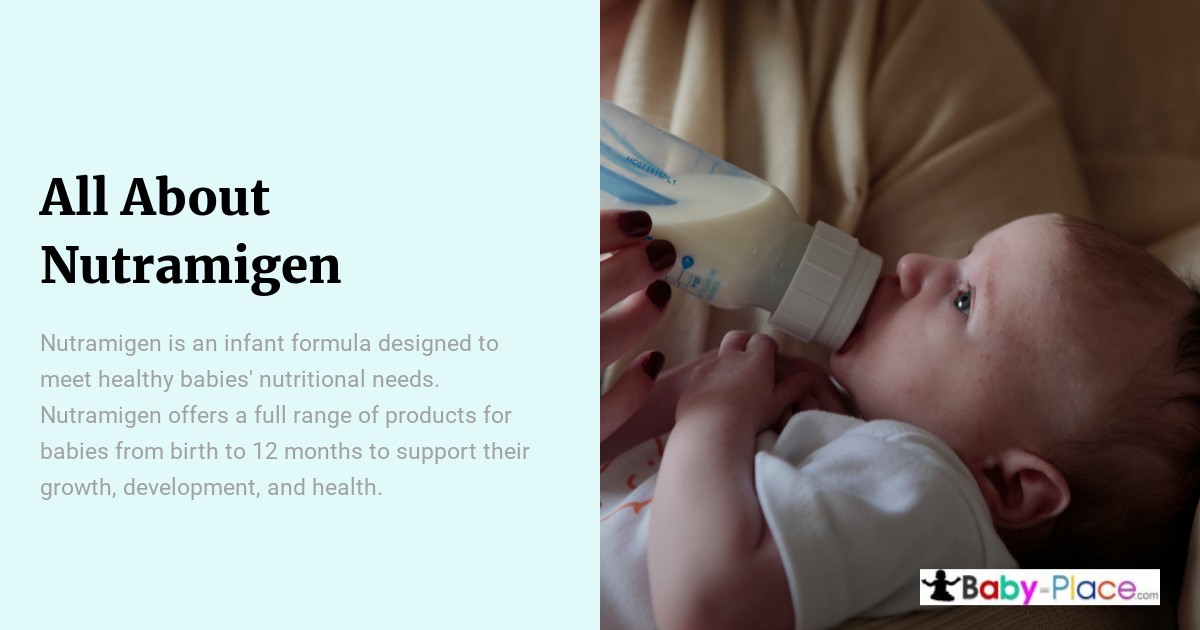
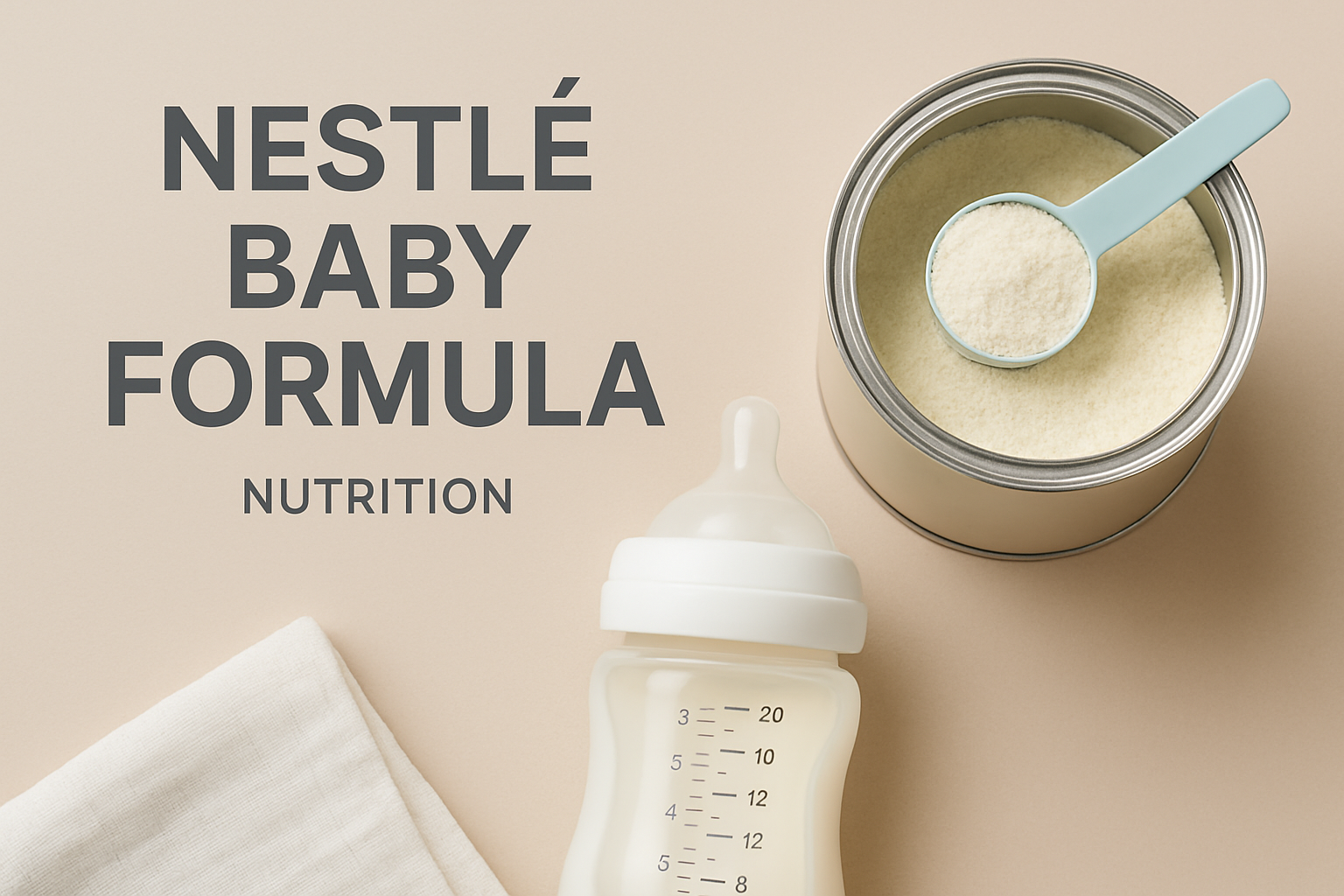
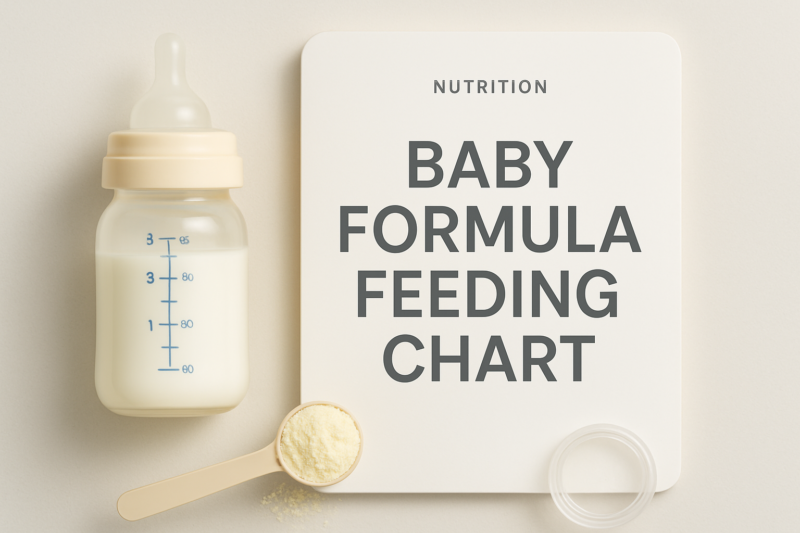
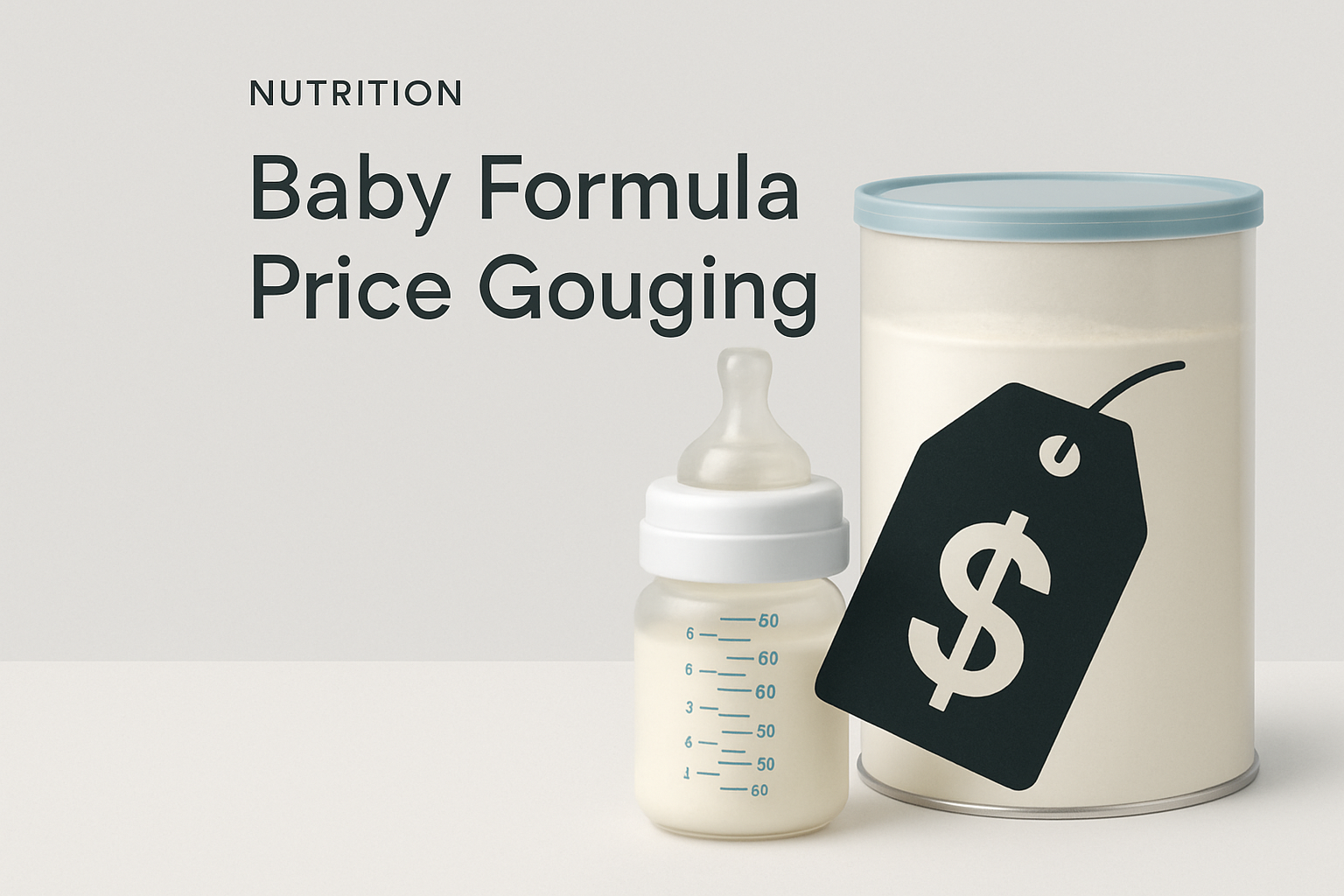

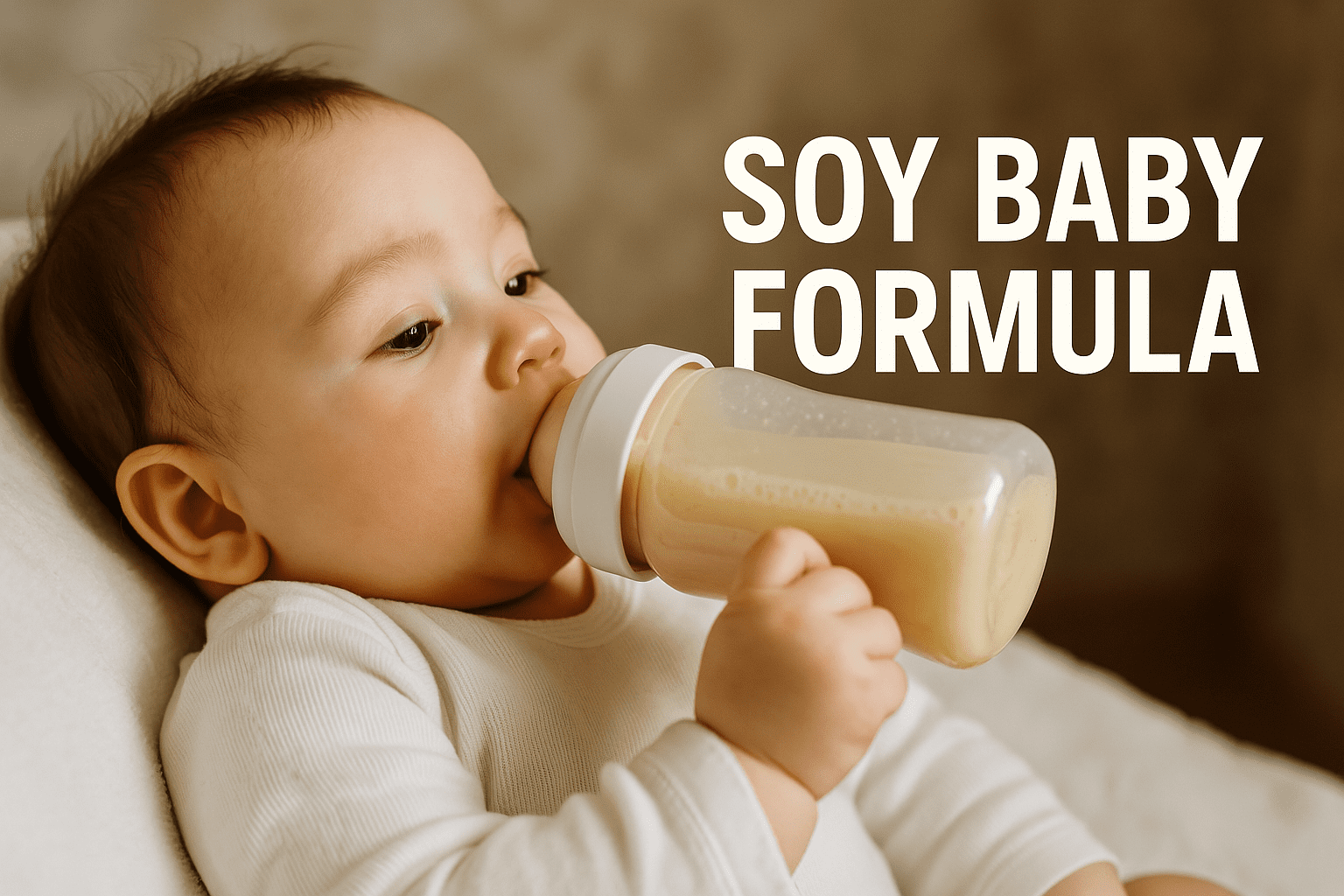


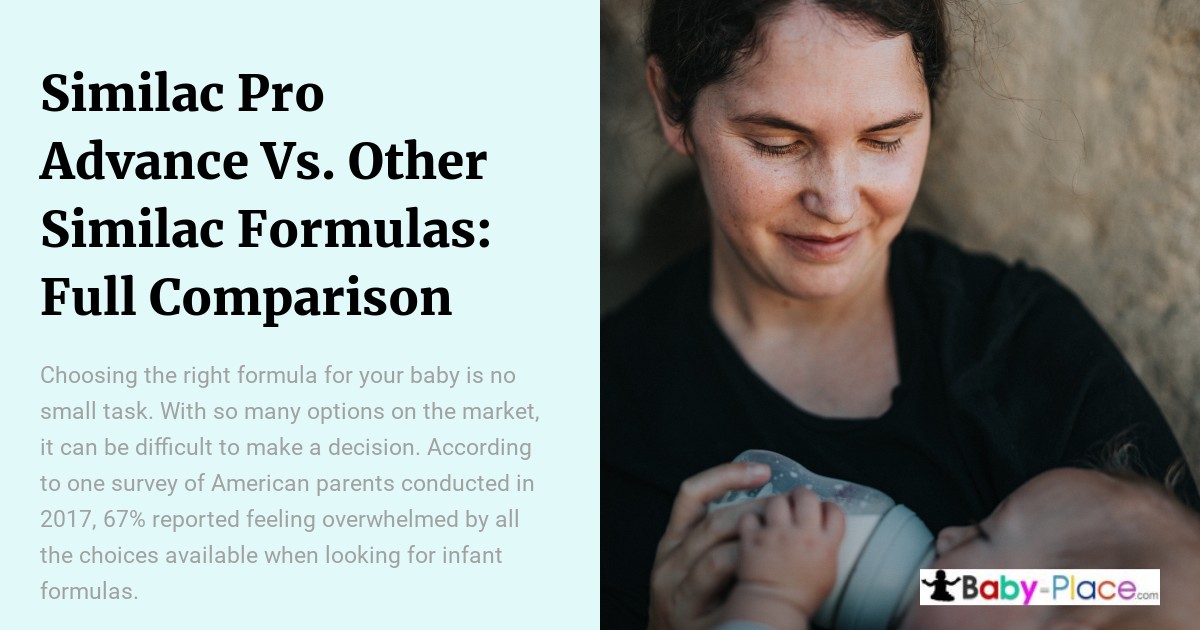
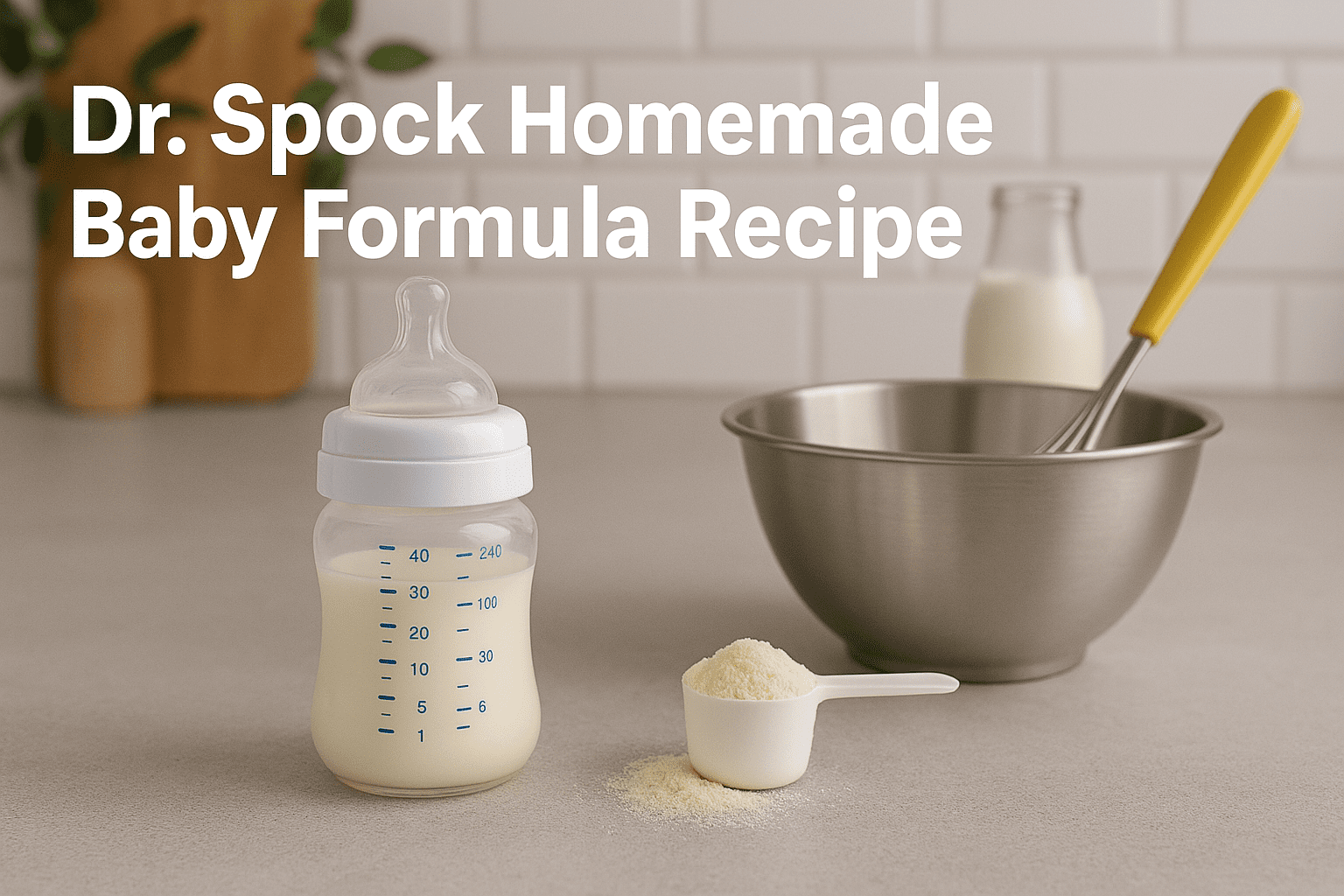
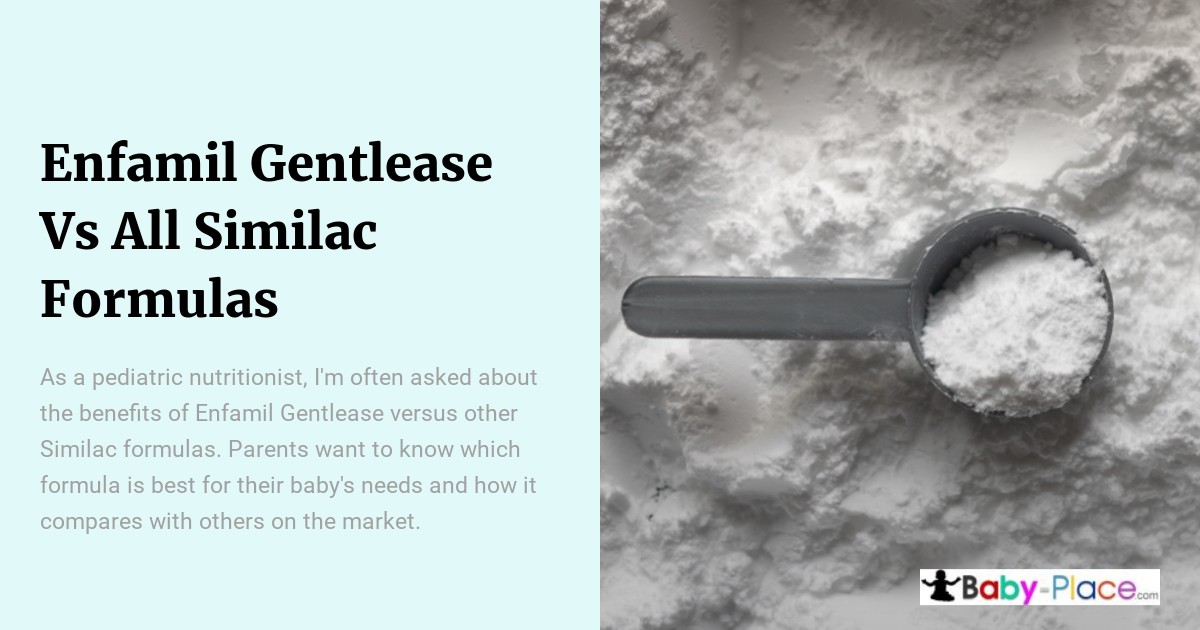


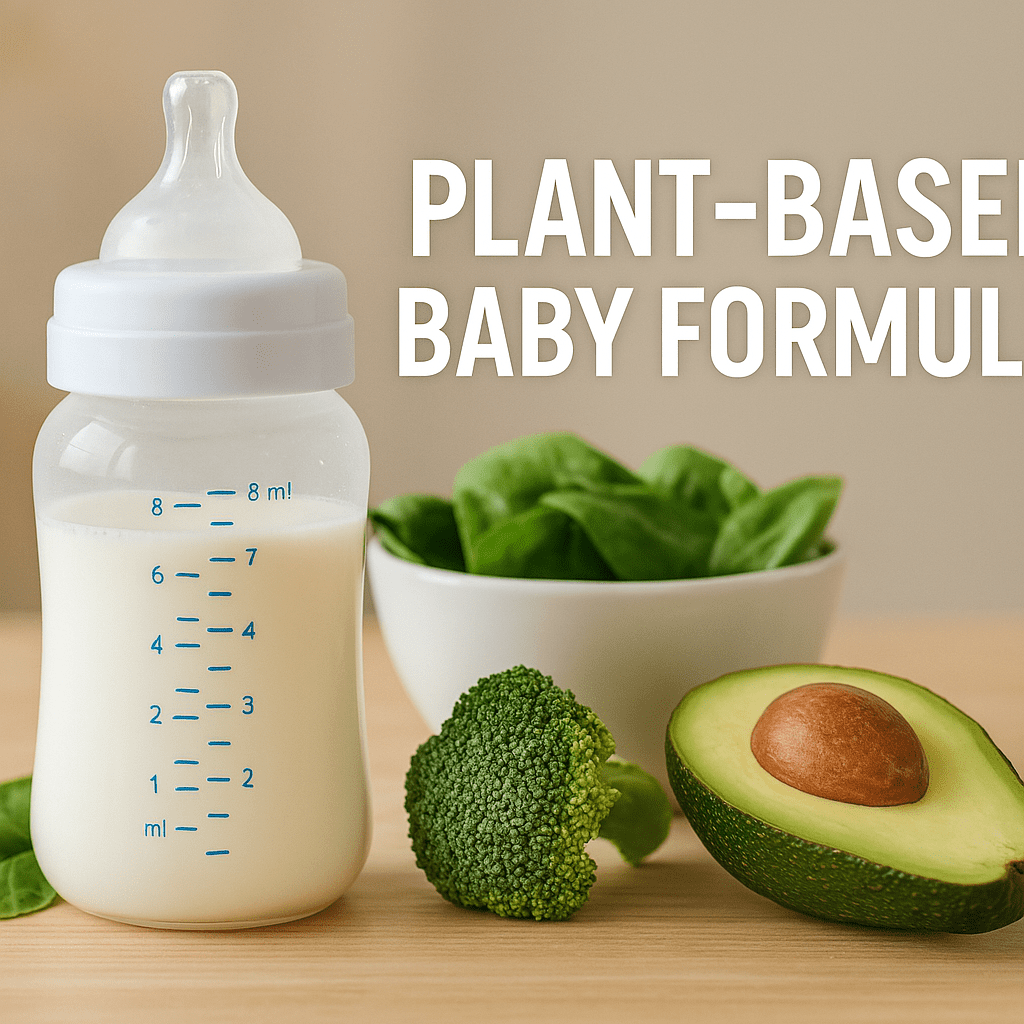


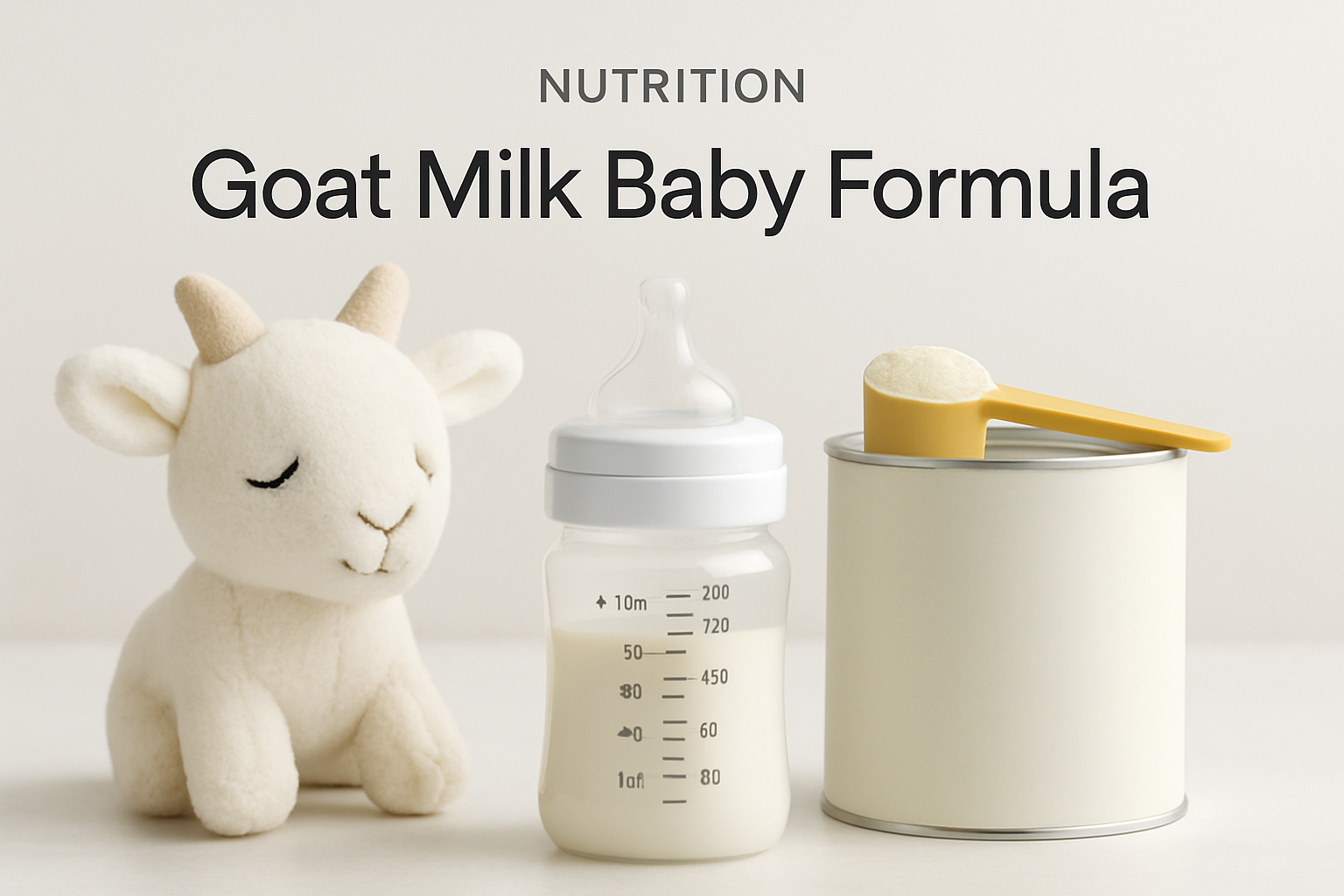
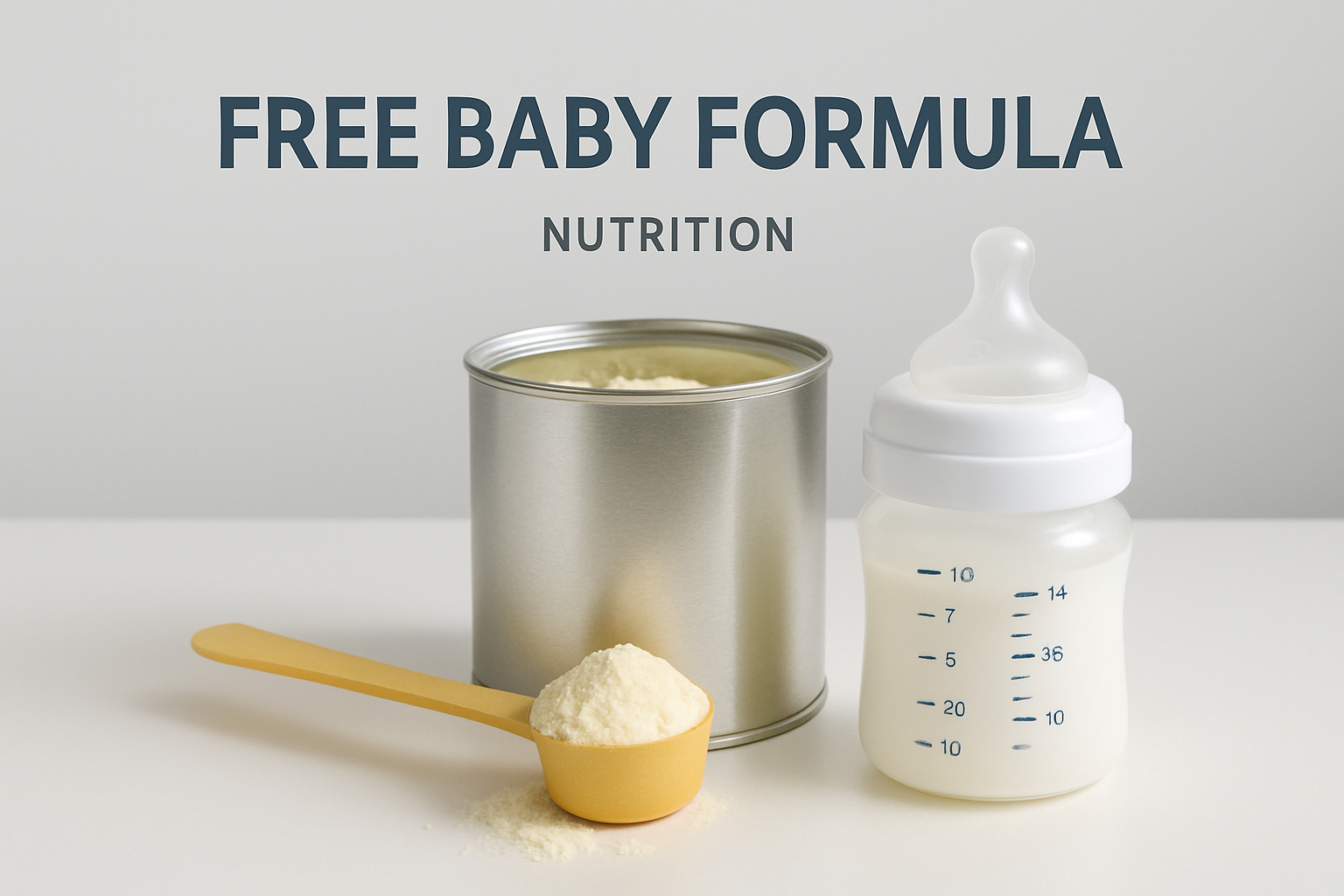
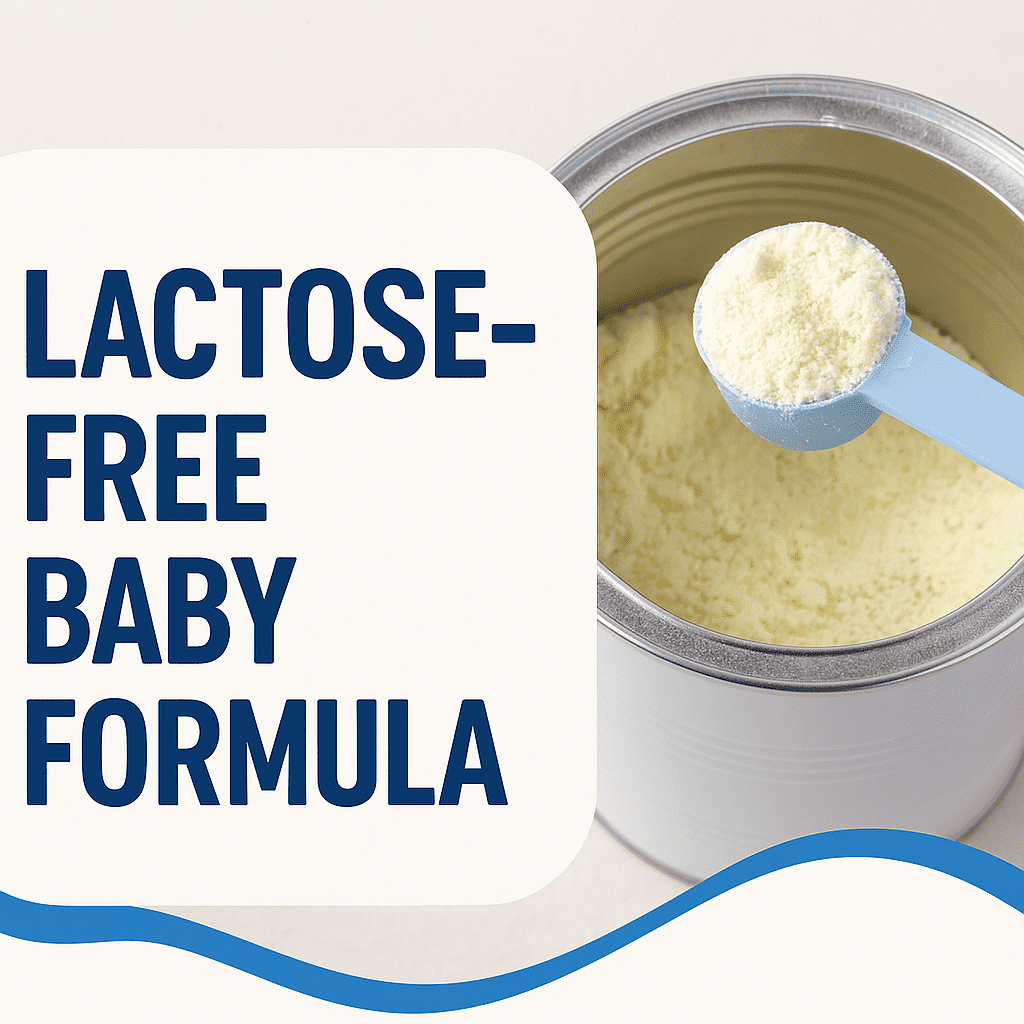




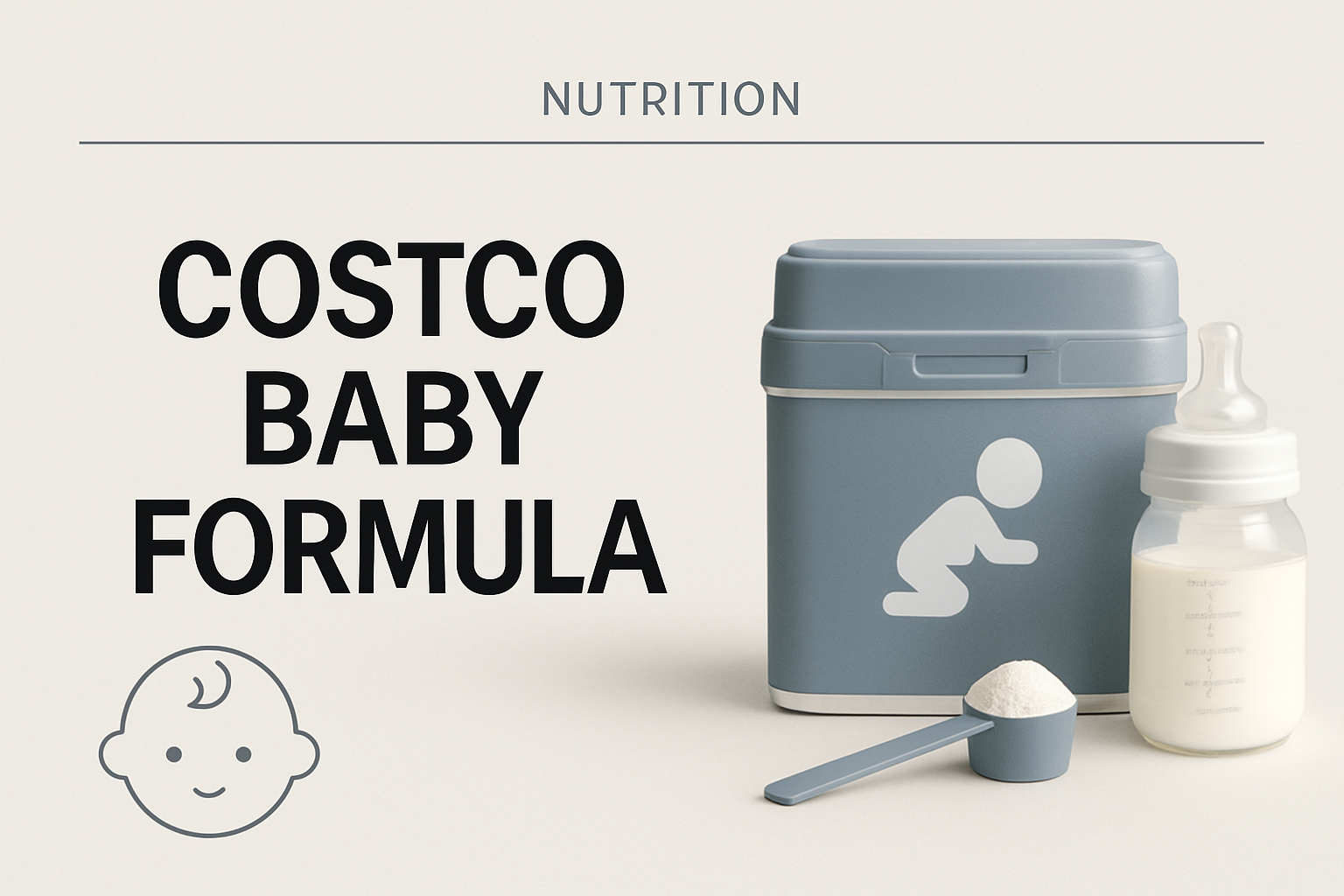

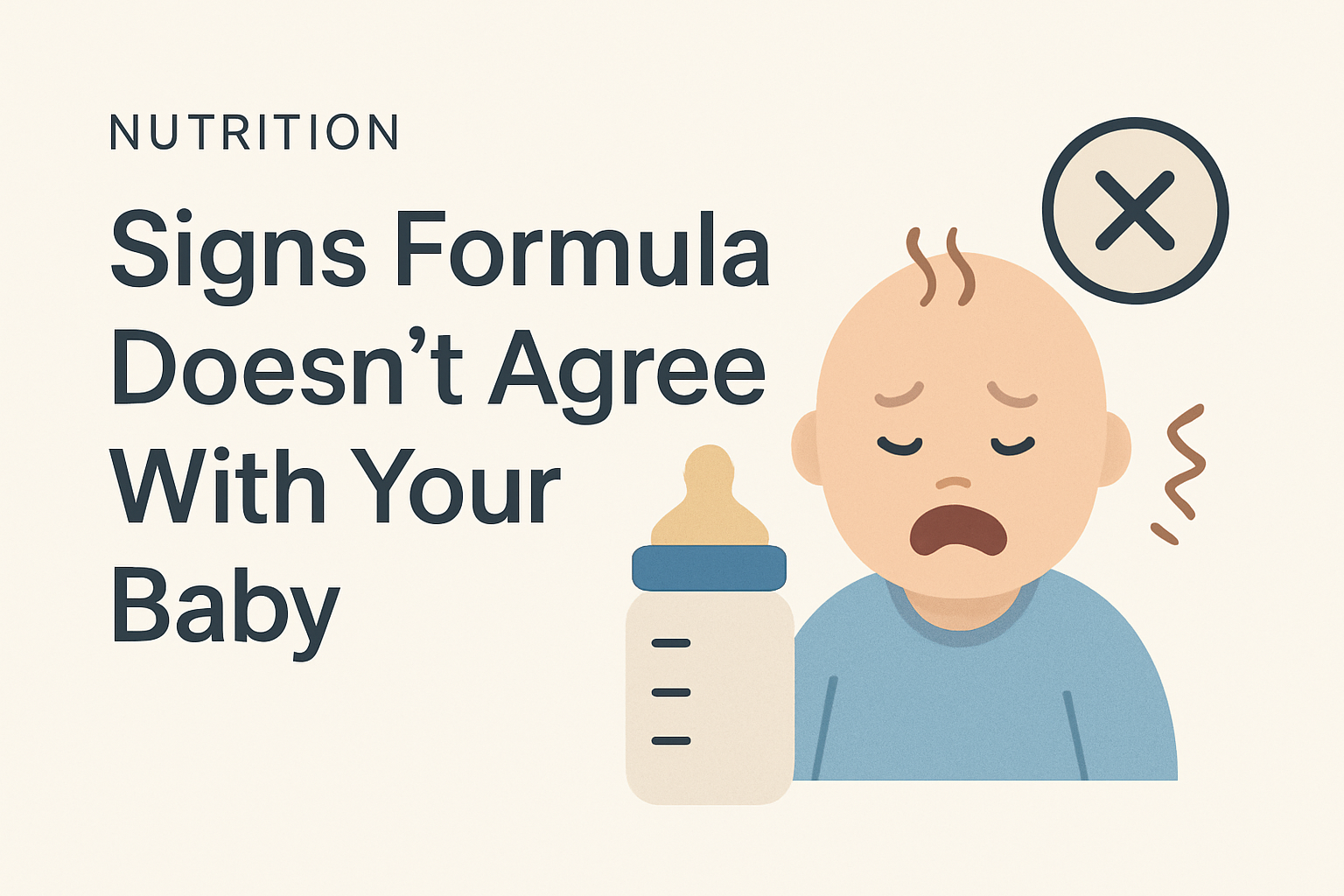
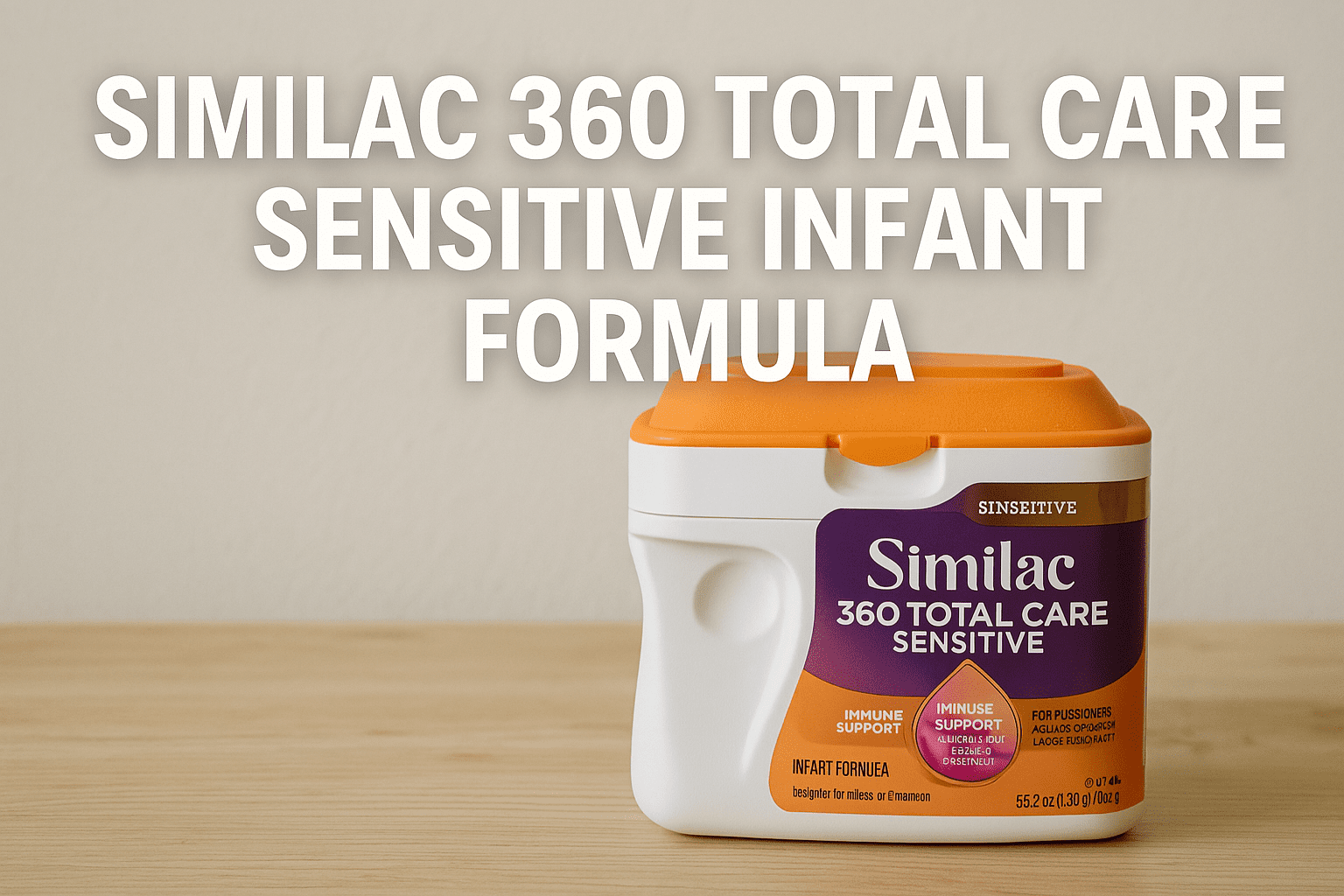

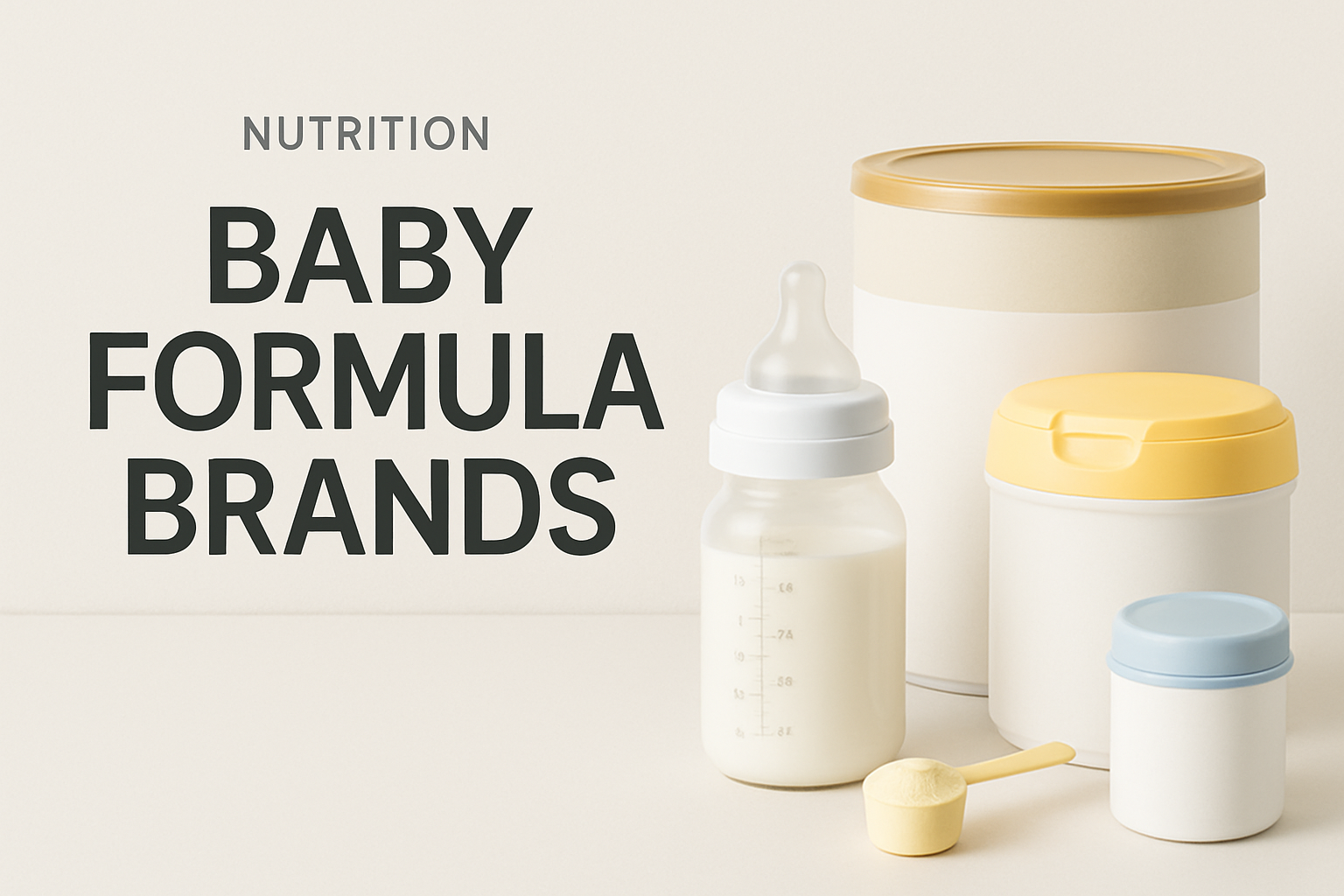

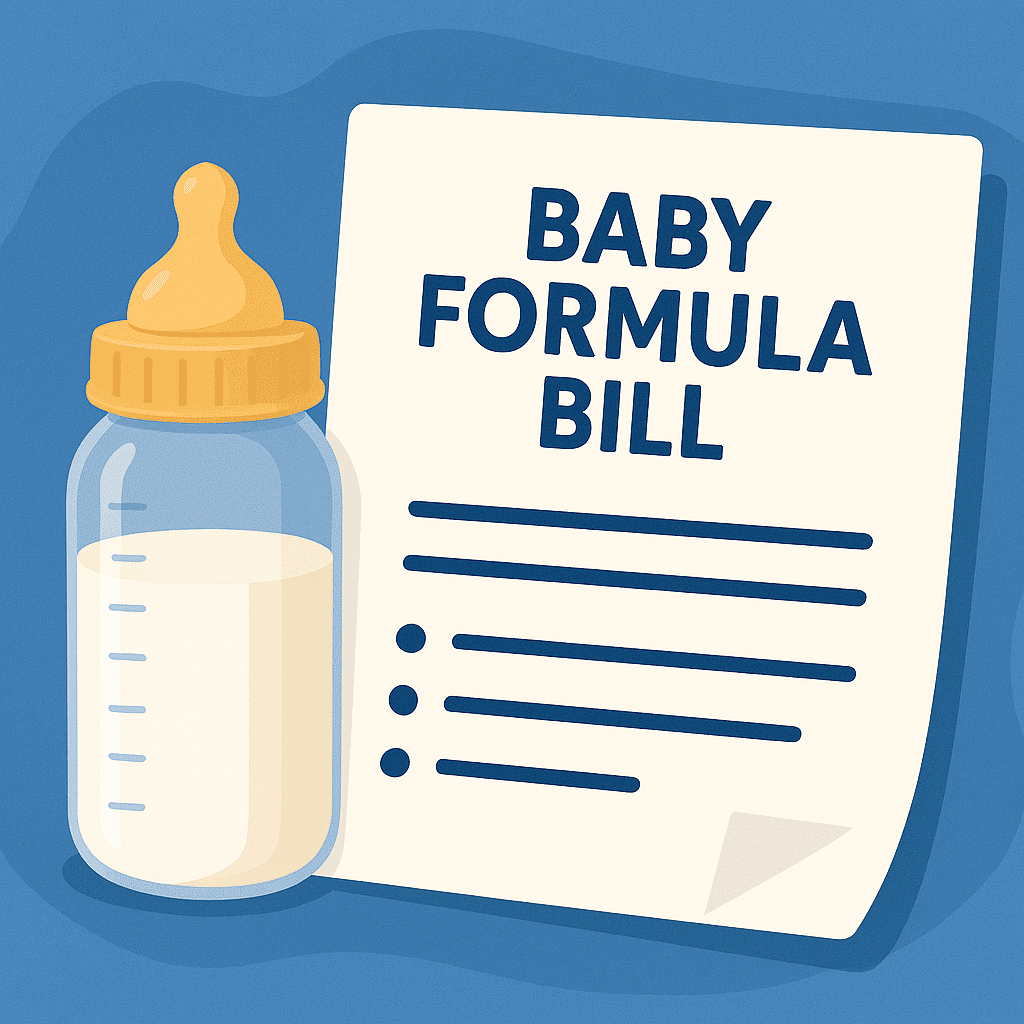
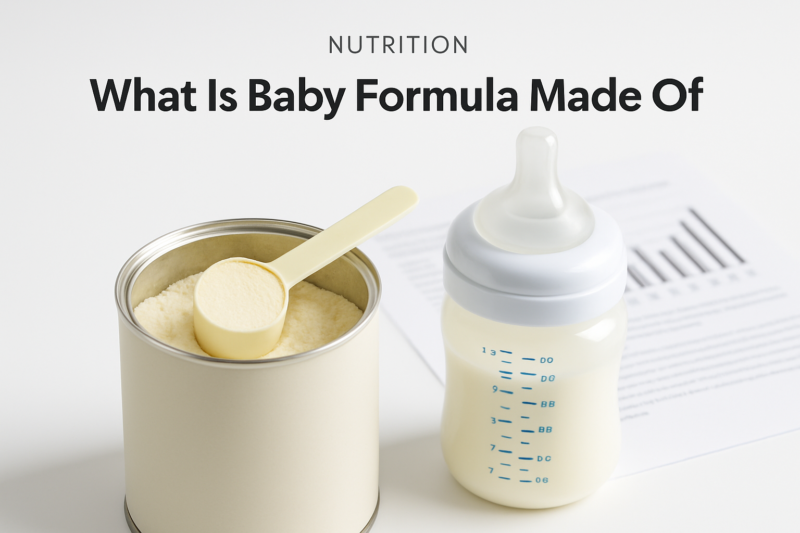

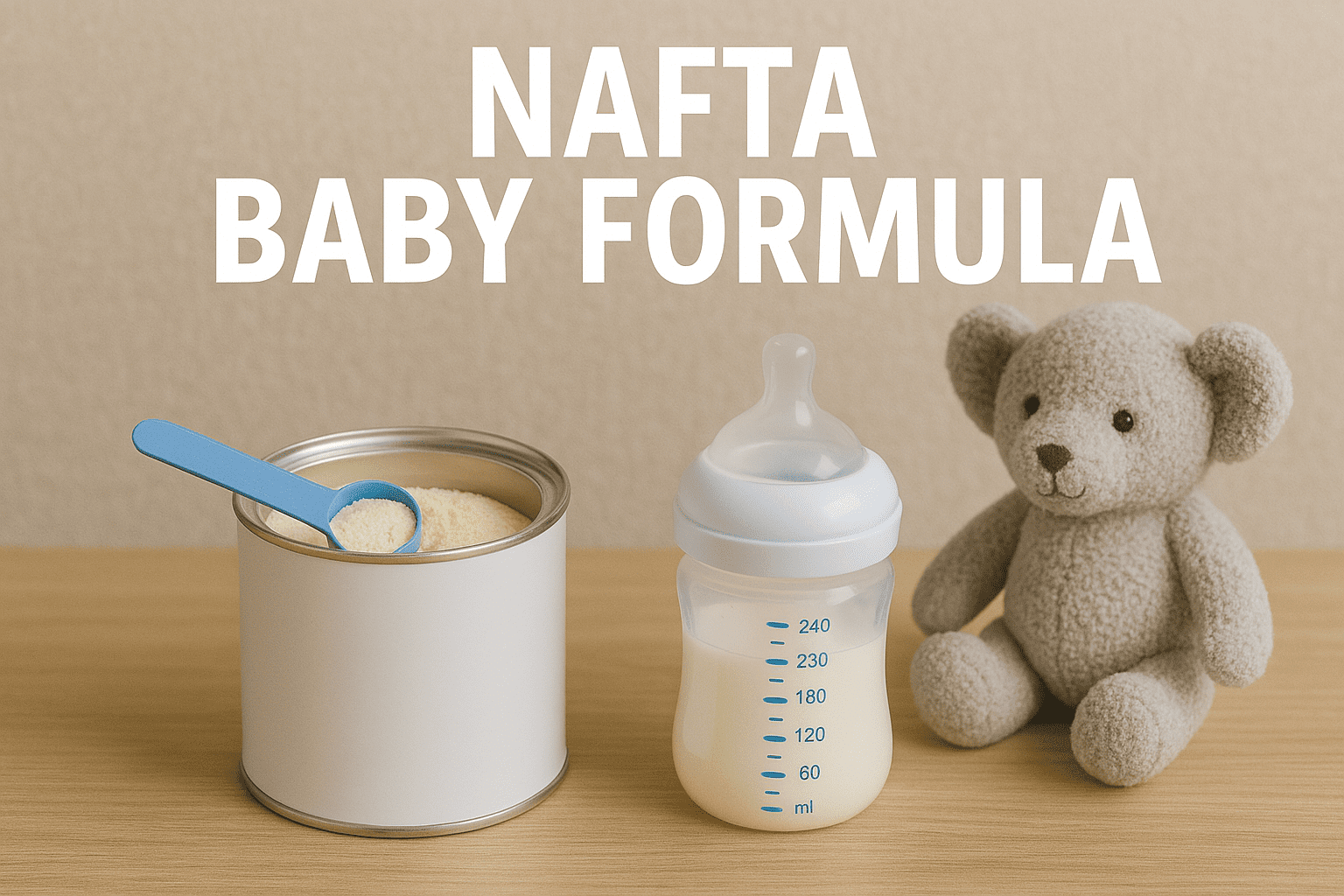
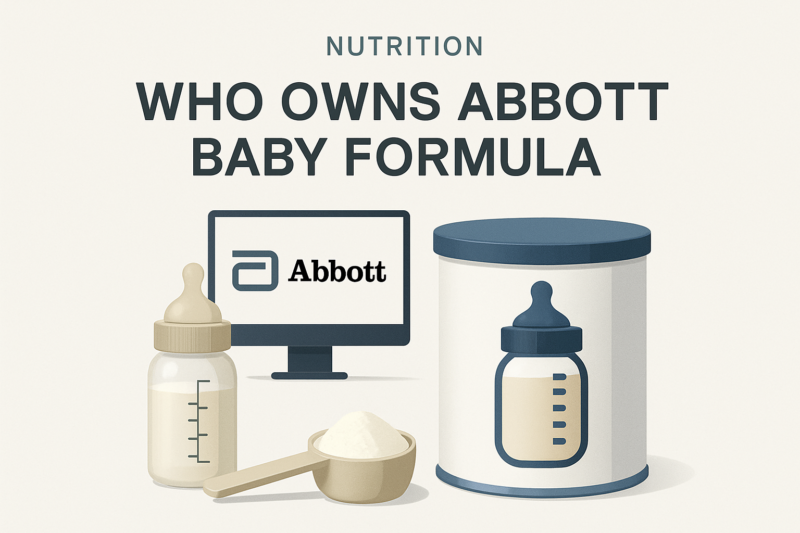


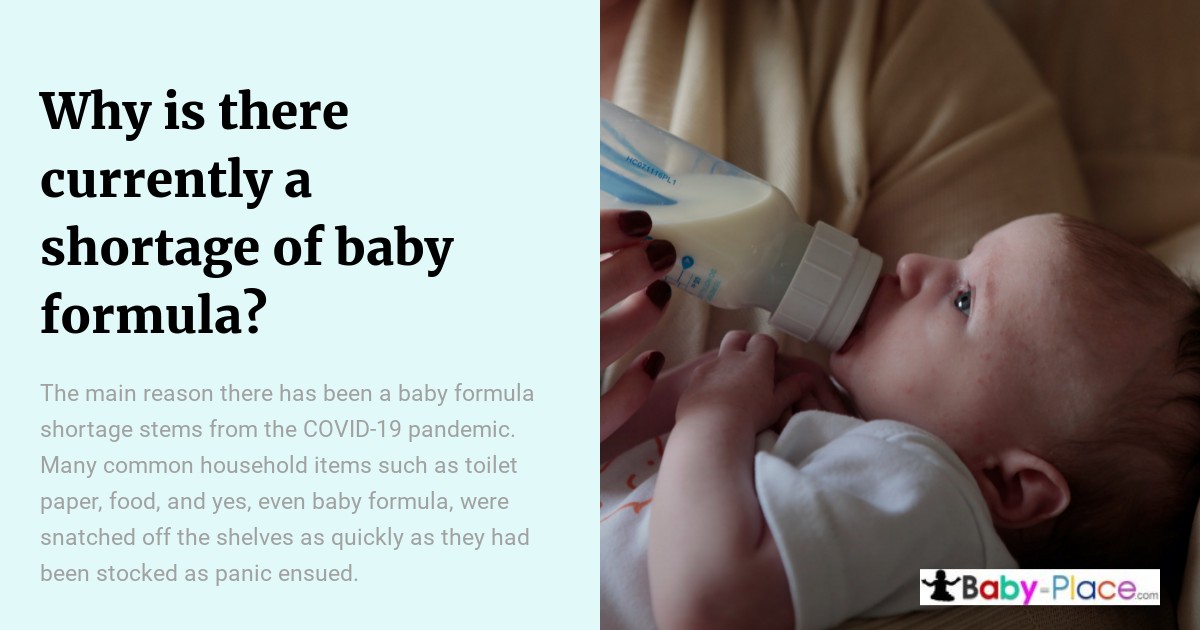

![[Recipe] Homemade Baby Formula Recipe](https://baby-place.com/wp-content/uploads/2025/04/homemade-formula-recipe-e1755526887889.png)
![[Recipe] Making baby formula at home](https://baby-place.com/wp-content/uploads/2022/12/baby-formula-recipe.jpg)